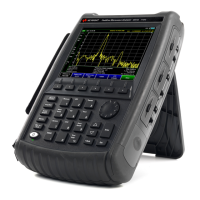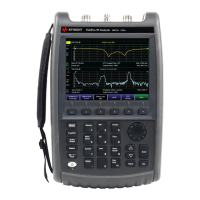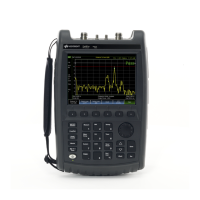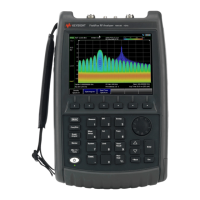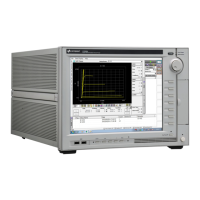Keysight N9927-90001 User’s Guide 99
NA (Network Analyzer) Mode
NA Mode Settings
—Point - Each data point is measured <n> times and averaged before
going to the next data point. On subsequent sweeps, averaging
restarts by measuring each data point again <n> times. The average
counter is not updated because data is not displayed until all the
averages have been applied.
—Point averaging is usually faster than sweep averaging. However, you
may need to increase the Point Average count to obtain the same
level of noise reduction as with sweep averaging.
— While averaging is in process, press Sweep 3
then Restart to restart the
averaging at 1.
IF Bandwidth
The FieldFox converts the received signal from its source to a lower
intermediate frequency (IF). The bandwidth of the IF bandpass filter is
adjustable. Reducing the IF receiver bandwidth reduces the effect of random
noise on a measurement. However, narrower IF bandwidths cause longer
sweep times.
How to set IF BW
— Press BW 2.
—Then IF BW
— Then choose from the following:
— 10 Hz
| 100 Hz | 1 kHz | 10 kHz | 100 kHz
More
30 Hz | 300 Hz | 3 kHz | 30 kHz
Smoothing
Trace smoothing averages a number of adjacent data points to smooth the
peak-to-peak noise values on a displayed trace. The number of adjacent data
points that are averaged is known as the smoothing aperture. Aperture is set
by specifying a percentage of the X-axis span.
Trace smoothing does NOT significantly increase measurement time.
Smoothing is used in Group Delay measurements, although it can be used with
any NA formatEXCEPT Polar or Smith Chart. Learn more about NA Mode
formats, including Group Delay, in “Format” on page 94.
When enabled, Smo appears on the FieldFox screen.
How to set Smoothing
— Press BW 2
—Then Smoothing ON OFF
—Then Sm. Aperture and enter a value between 0 and 25 (percent) using the
numeric keypad.

